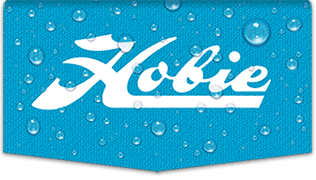This is the second of two parts -- the link to part 1 is at the end of the post. Part 2 discusses how the MD-i80 feels and performs in the water. I've logged over 50 miles on the Drive so far of which over 12 have been in reverse. Everything has worked flawlessly. Obviously the most important feature is in the reverse process. It's pretty simple -- pull the handle and keep pedaling or pause pedaling and resume. If the boat is headed in one direction when you engage the reverse process, it takes about 0 to 2 strokes to flip the fins, depending on speed. There is no loss of power so you can really accelerate backwards as fast as you can forward if desired.
Fin performance, believe it or not, is about identical with the older Turbos. Pedal feel starts out a little firmer but becomes easier with speed in contrast with the older fins which start out easy but firm up at around 3 MPH. I ran an hour at fast cruise vs. the MD-180 and the GT Drive in an Outback (same route, similar conditions) and covered 4.57 miles in each. I had expected the MD-180 to be somewhat slower because the fins are smaller, but that wasn't the case.
The traveler setting is very significant in fin feel and somewhat significant in performance. The fin has a small range of motion along its mast -- this is adjustable by spinning the traveler wheel.

If you tighten the fin so it has no ability to slide up and down the mast, this inhibits its smooth movement along the traveler and causes undue wear on the traveler -- so don't!. Backing the fin off slightly so it has at 1/16" movement up and down the mast gives a firm feel, smooth operation and good speeds at fast cruise. As you loosen it further, the fin becomes progressively easier to push and the cadence becomes faster at higher speeds. Unlike the old "clew-outhaul", there is no universal best setting -- this is important to your comfort level and a great way to customize your fins!
It is very easy to adjust the traveler wheel. I recommend you start out loose and tighten a small amount until the fins feel best. If the side-to-side motion becomes inhibited or sticky, back off -- that should be your maximum push resistance without causing excessive wear.
Another significant item is your rudder. If you're fishing and working your boat forward and backwards at low speed, you need maximum directional control so the wind doesn't turn the boat to a less optimal angle. Having a large rudder is instrumental in accomplishing this. This has a down side, however. At backward speeds greater than about 2.5 MPH, the rudder can suddenly slam to the side and you may find yourself in the water. This is because our rudders are designed for going forward. If you want to reverse faster, no problem -- just pull the rudder up. Our boats are directionally stable in reverse and you can skim your paddle along the surface to provide small turning correction. Using this technique, I could get both the Outback and My Revo 11 up to 5.1 MPH in reverse! Realistically, I can't imagine any practical reason the that though.
Is there a way to get high speed reverse with rudder control? Of course. You can do this by rebalancing the sailing rudder by removing a portion of the back edge and creating something that looks like this.

I won't go into the details and specs here unless anyone asks, since there aren't too many readers who want to cruise around backwards at higher speeds.
The last item that is very helpful if you're going to spend significant time backwards is a rear view mirror. Here is one that is hat mounted, called The Third Eye. These are available at bike shops or on line for about $10 to $15.

Overall, the MD-180 is really great! For fishermen it becomes a major additional tool to pull fish away from submerged structure, kelp, jettys, etc, improve your position control in winds, currents and tides, and keep the large pelagics from hauling you around on a joy ride. For non-fishermen, do you really need one? If you have a "smart phone" and a big screen TV, then the answer is yes, for the same reason that you have a Mirage Drive in the first place. It enhances your on the water experience. I don't have a fancy phone or big TV, but I'll be buying an MD-180 when they are available. I really get a kick out of going backwards -- it adds a certain serenity to the ride that is hard to explain. Here are some parting shots:



Great Job Hobie!
Part 1 is located here:
viewtopic.php?f=11&t=59266












